Dowel Lam Timber
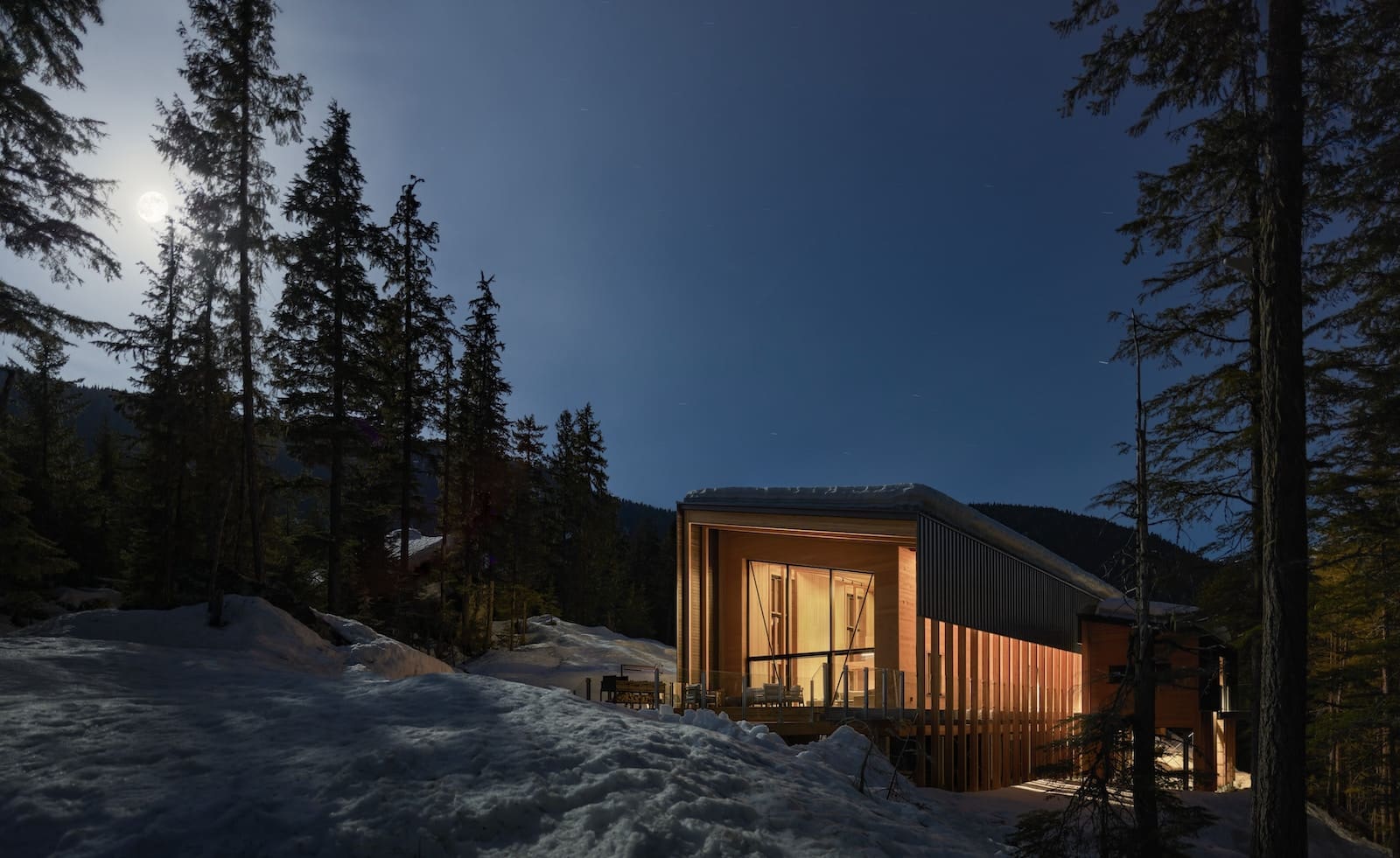
Greater Versatility with Dowel Laminated Timber
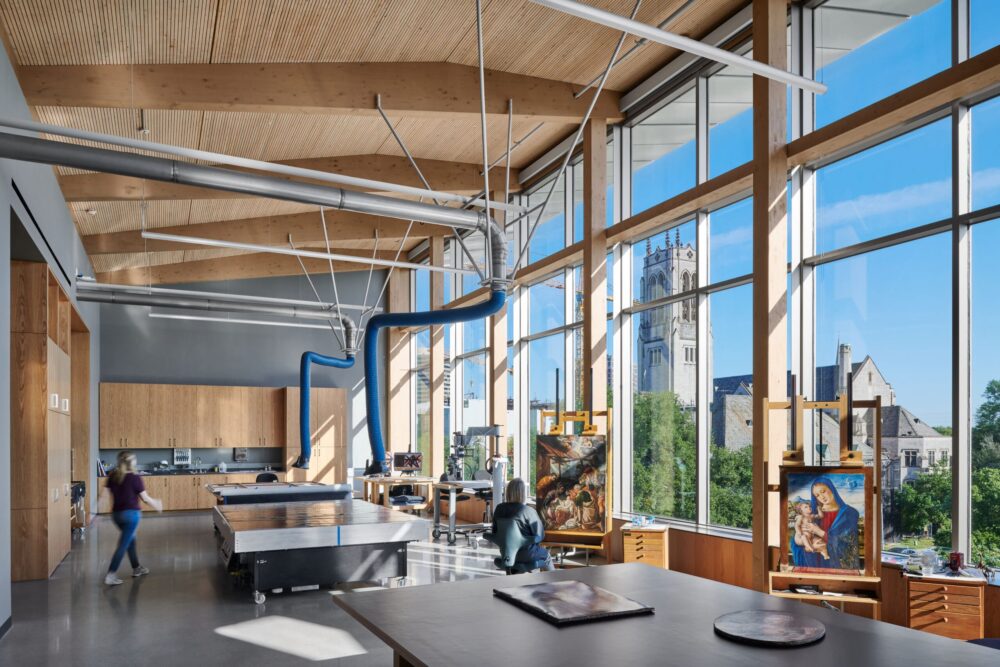
Why DLT Structural Efficiency, Unmatched Architectural Quality
DowelLam offers a beautiful, efficient, and highly customizable mass timber product. Our team of engineers and fabricators is available to develop solutions for your project — including support with structural engineering, trade coordination, MEPF integration, acoustic performance, and more.
DowelLam is more than structure. It serves as the architectural finish, creating a warm, natural space to be enjoyed by the end user. The profile flexibility, wide array of species options, and near limitless coating options allows a high degree of architectural customization.
Our manufacturing process and product properties offer opportunities for unique technical solutions that are difficult to achieve with other mass timber panels.
Applications of DLT
Dowel laminated timber is a flexible mass timber product offering a wide range of surface profiles which can be integrated in a variety of applications. All applications of DLT can be customized on a project basis.
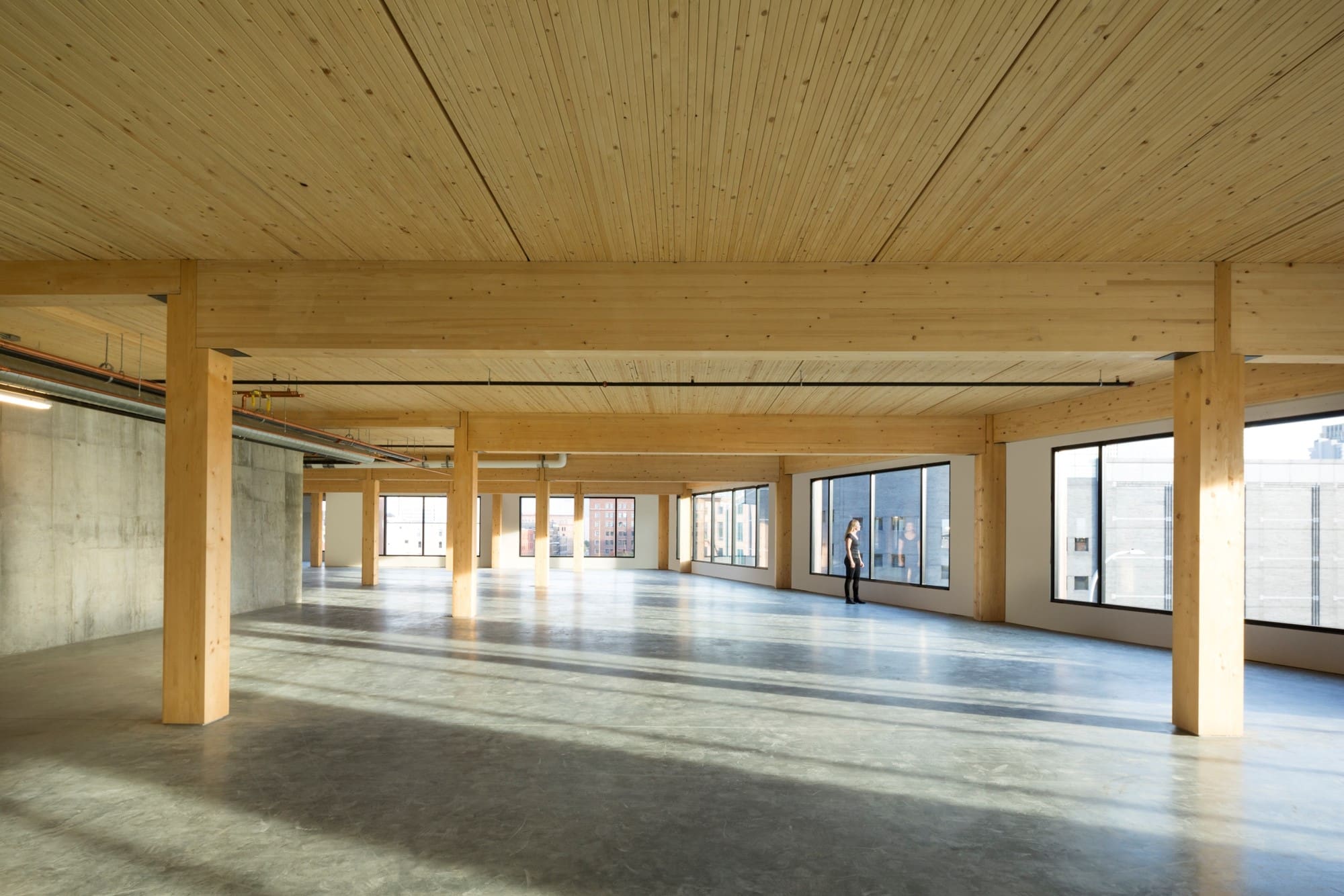
DLT Applications Floor Panels
DowelLam panels create an efficient floor structure combined with a beautiful exposed wood ceiling, with spans up to 30’. For longer spans, panels can be made structurally composite with a concrete topping using inclined screws or other composite connectors.
Panels can be integrated with any number of structural framing systems including Glulam / CLT, structural steel, cold formed steel (CFS) walls, light wood frame or concrete.
DowelLam panels can achieve excellent acoustic properties with the addition of an acoustic mat and concrete topping, with STC and IIC values in the low to mid-50s. NRC values of 0.70 are achievable with our Acoustic DLT.
DowelLam floor assemblies have achieved a 2-hr Fire Resistance Rating (FRR) with a 5.5” thick panel tested in accordance with ASTM E-119 / CAN/ULC-S101.
DLT Applications Roof Panels & Exposed Soffits
DowelLam panels incorporate simplicity and the warmth of wood into an economical solution for short and long span roof systems. The DLT panel can be used in all weather conditions as an exposed soffit—combined with high quality factory applied finish treatments, the exterior system becomes a robust, easy to maintain product with excellent visual appeal.
DLT roof systems can be flat or sloped and designed to accommodate heavy mechanical equipment / HVAC systems, roof anchors, solar arrays, and intensive / extensive green roof systems.
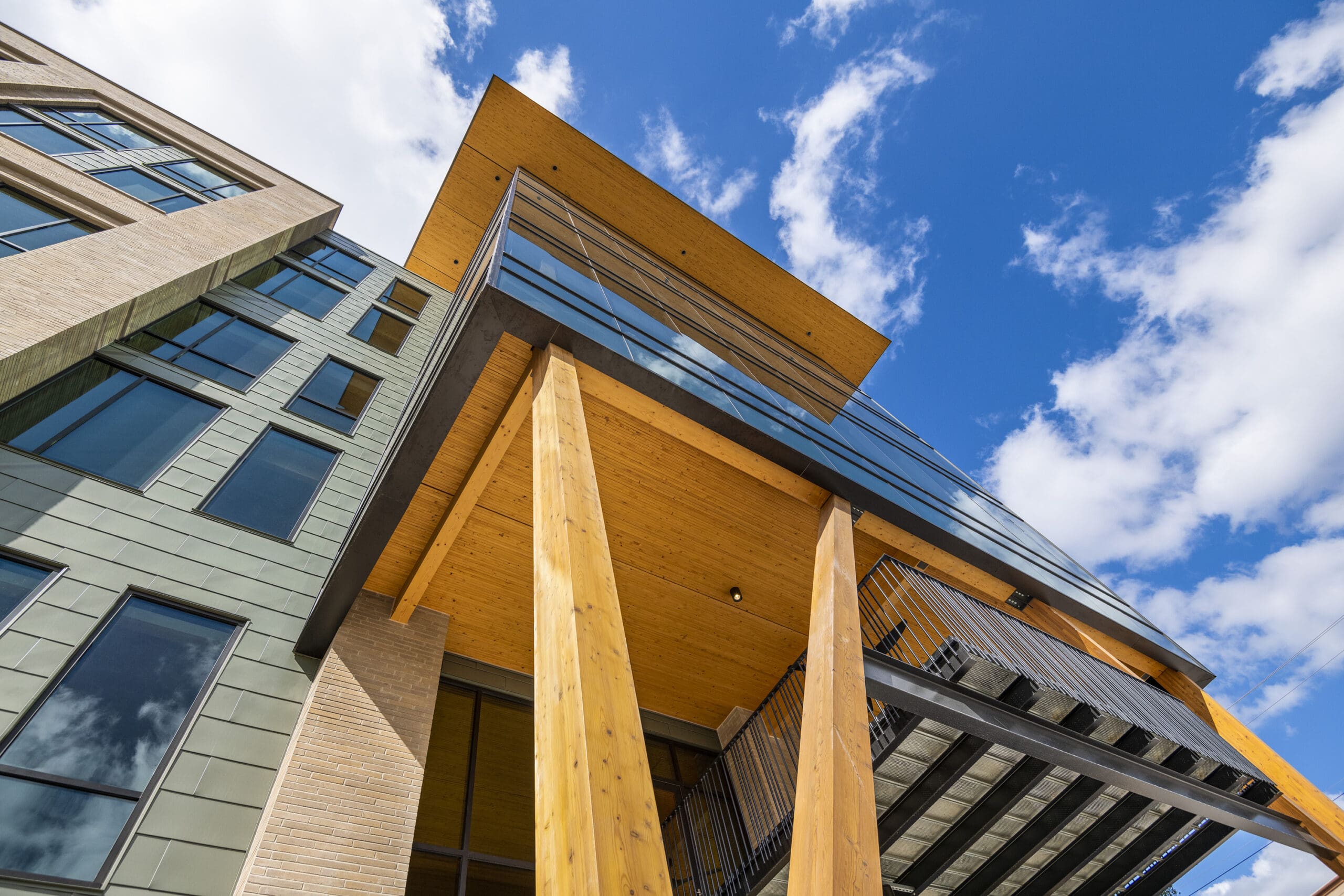

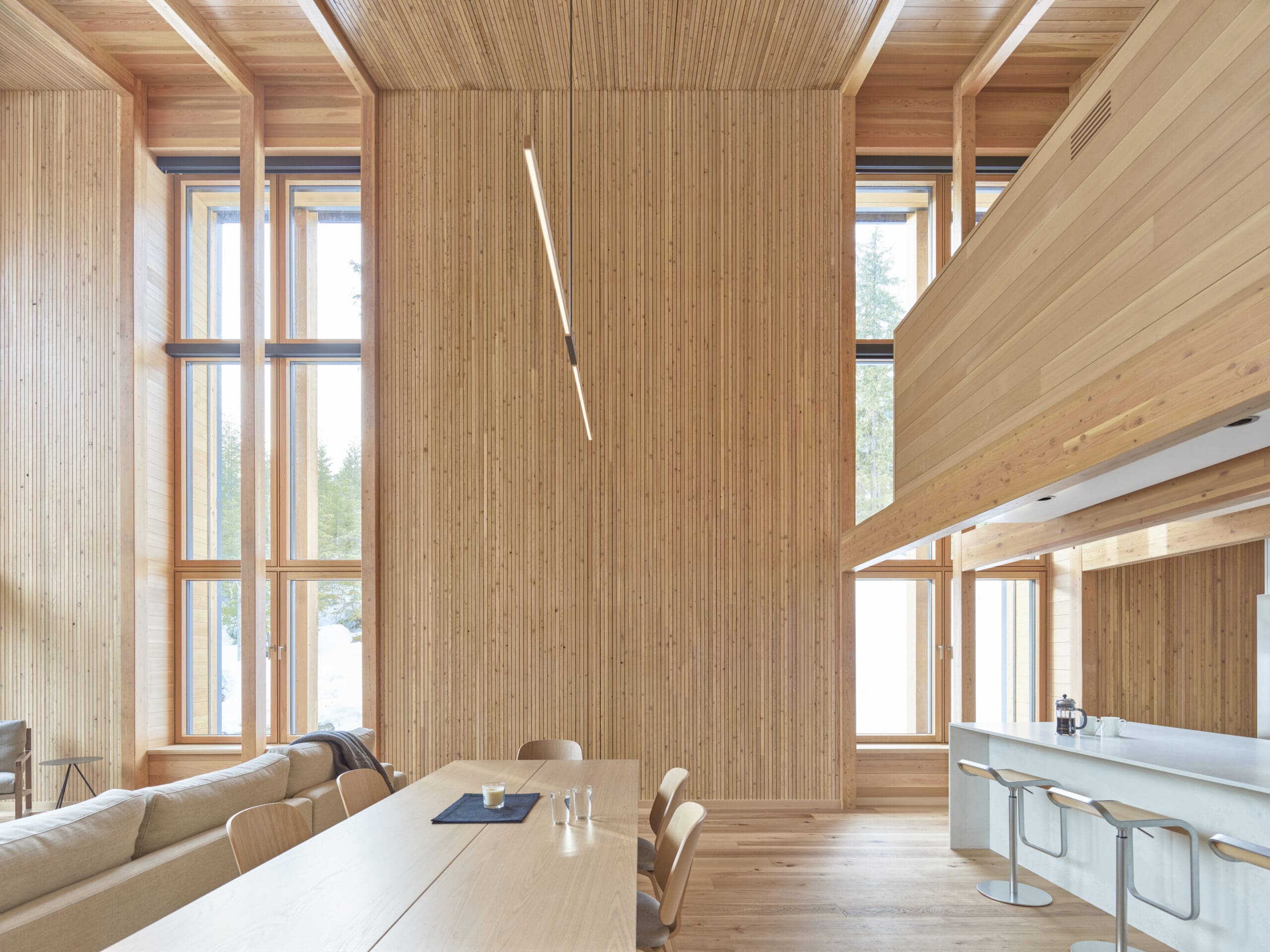
DLT Application Wall Panels
DowelLam wall panels provide a refined interior wall finish with smooth planed or sanded surfaces. The panels can be used as both structural bearing and shear walls with door and other openings framed in our shop. If used for bearing only, panels can be exposed on both sides. For shear wall applications, plywood or OSB sheathing can be shop-installed on one side for improved shear capacity, with the other left architecturally exposed. Coatings can be applied for protection of high-interface surfaces.
Acoustic panels can also be used in wall applications for improved in-room sound absorption.

DLT Application Where to Use DLT
- Schools
- Libraries
- Gymnasiums & pools
- Auditoriums & theaters
- Offices
- Hotels
- Multi-Family Residential
- Tall Wood Buildings
- Hotels - Magdalena hotel
- Canopies
- Transit Stations
- Industrial Buildings
- Data Centers
- Hospitals
Services Value-Add Services
Our team of professional engineers, designers, project managers, and fabricators are available to help realize your vision with DLT. We take a collaborative, proactive approach to develop cost-effective, practical solutions that deliver real value for our clients.
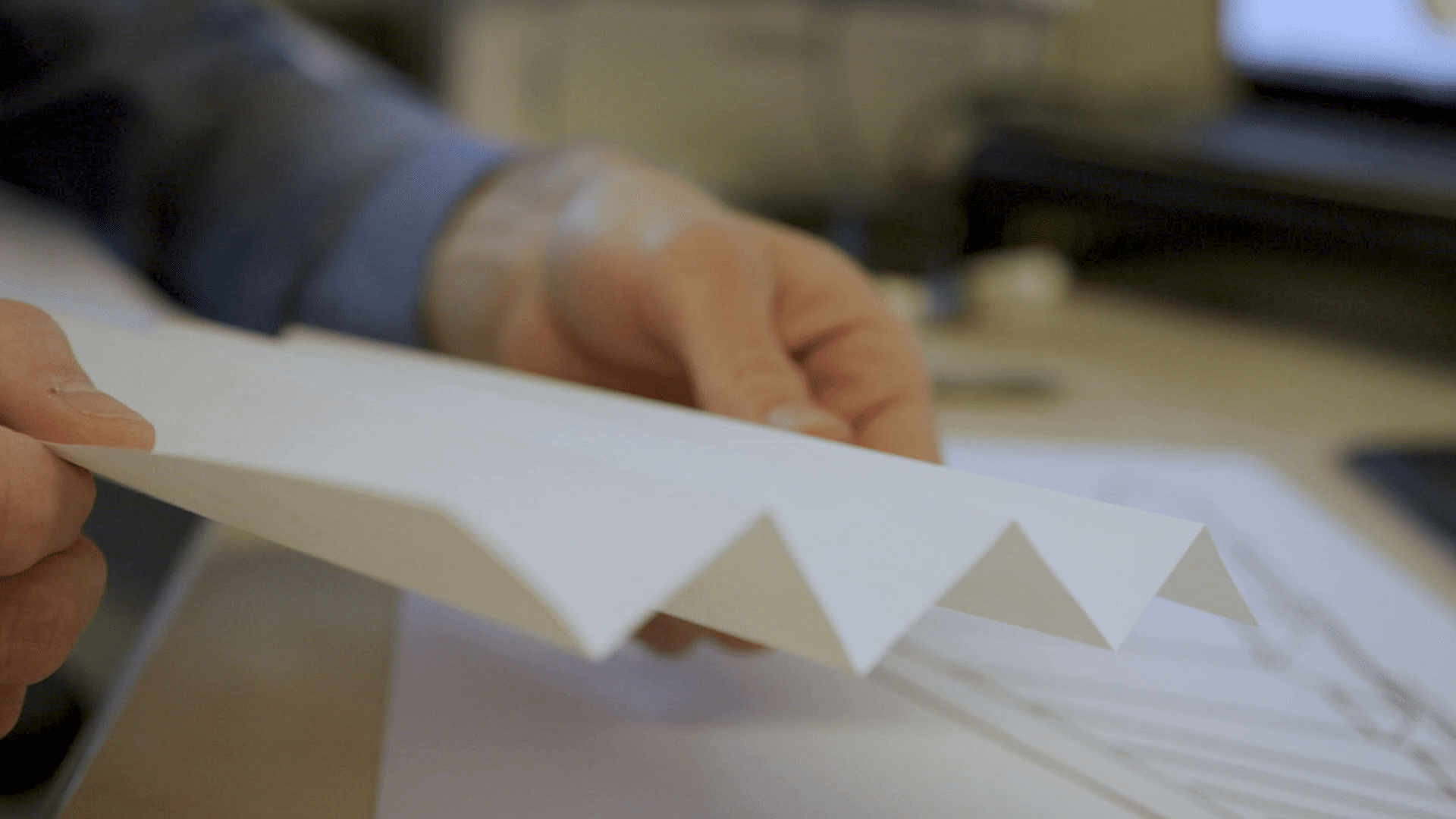
Design-Assist
Our experienced timber engineers provide technical support through every project stage. We offer expert guidance and feedback to ensure your design vision is achieved while addressing engineering requirements alongside manufacturing, logistical, and constructability constraints.

Engineering
DowelLam offers engineered panels, with shop drawings sealed by our in-house structural engineers. We have engineers licensed in most US States and Canadian Provinces.
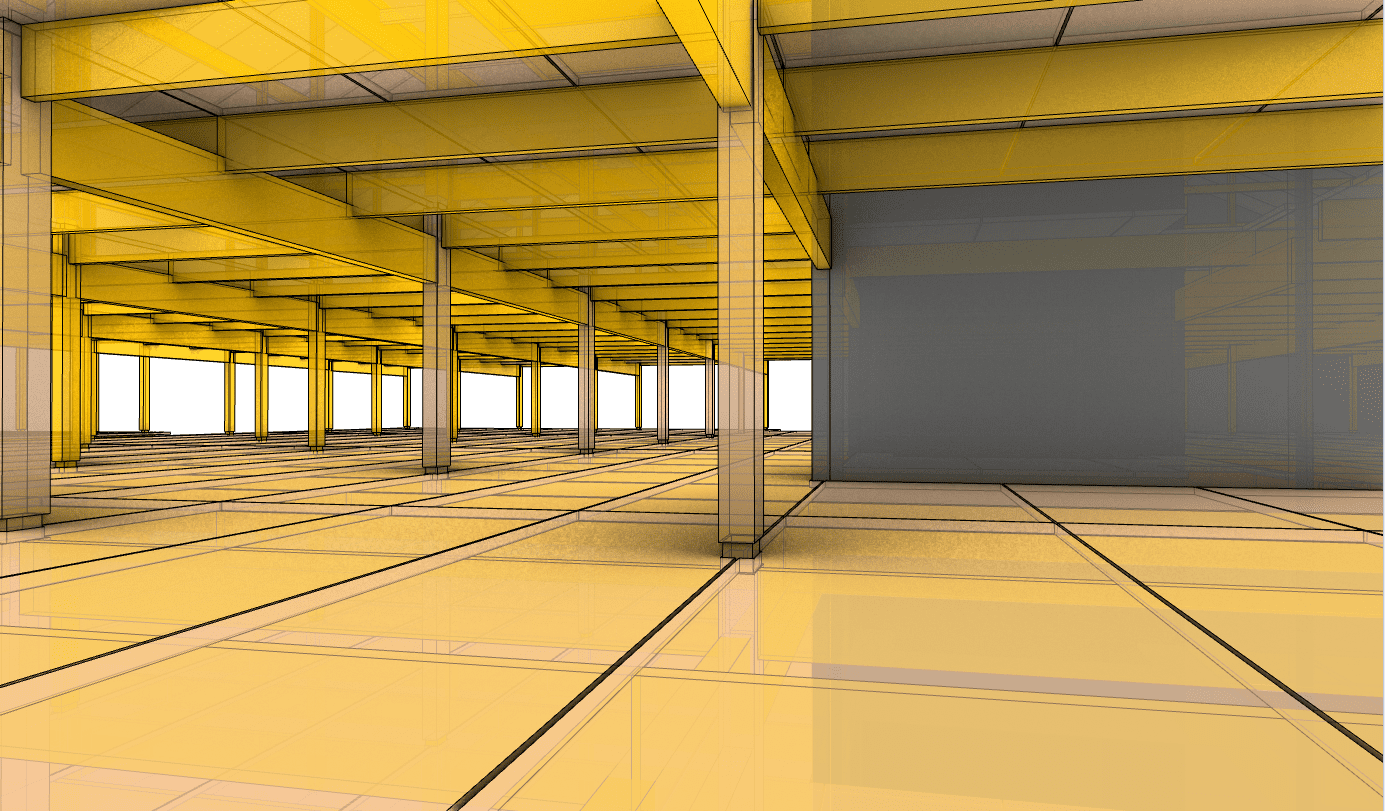
BIM/3D
DowelLam can provide full 3D modeling services for DLT (and interfacing systems if required), including participation in BIM and VDC coordination efforts. Our team of 3D designers and drafters are proficient in a wide array of software including Revit, Navisworks, Rhino, Tekla, hsbCAD and more.
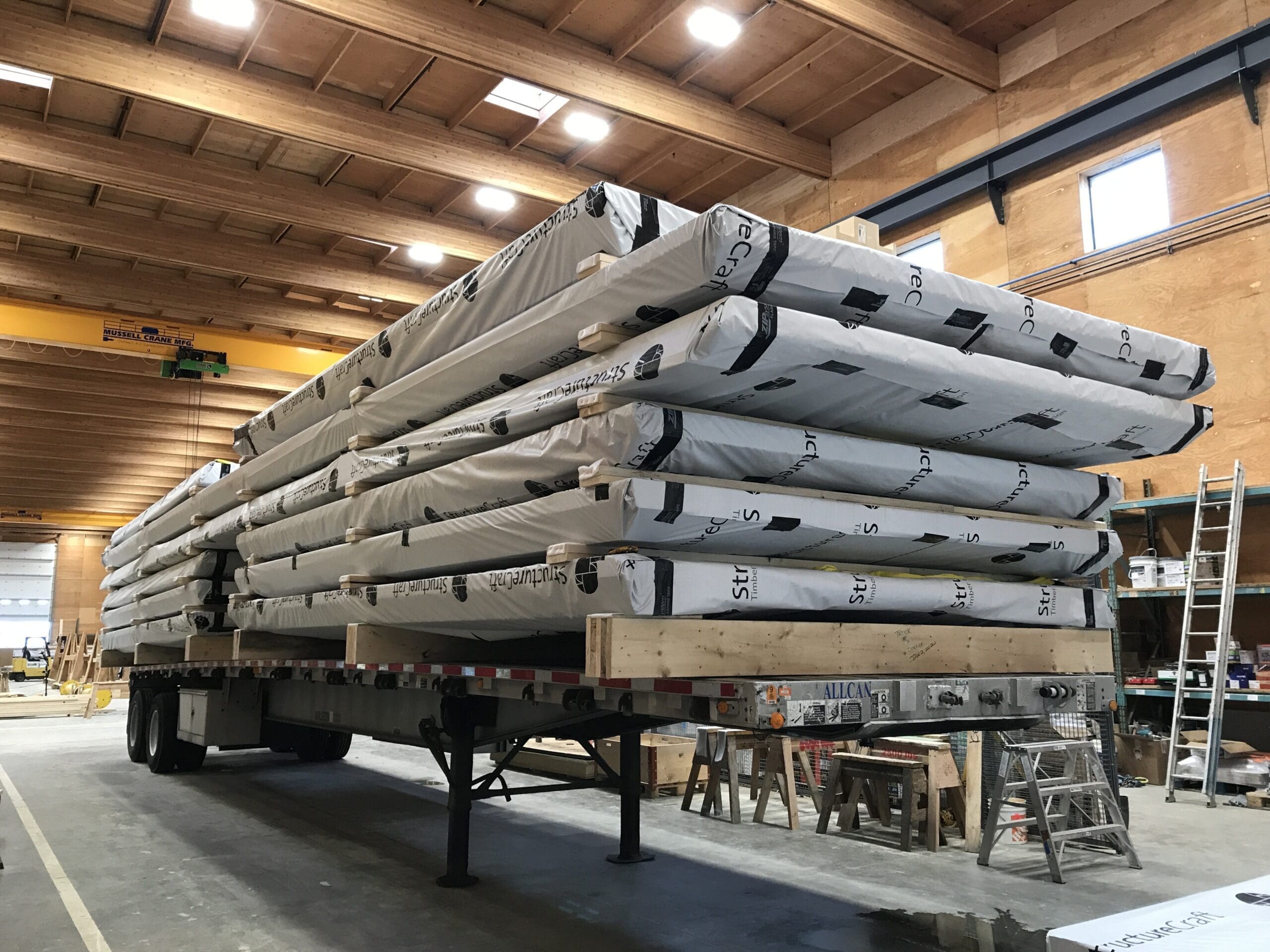
Logistics
Our experienced Project Delivery team will coordinate with the installer to ensure all panels are optimized for manufacturing and site efficiency, with panel loading and shipping sequenced to align with your erection schedule. We coordinate all shipping and delivery of your panels to site.
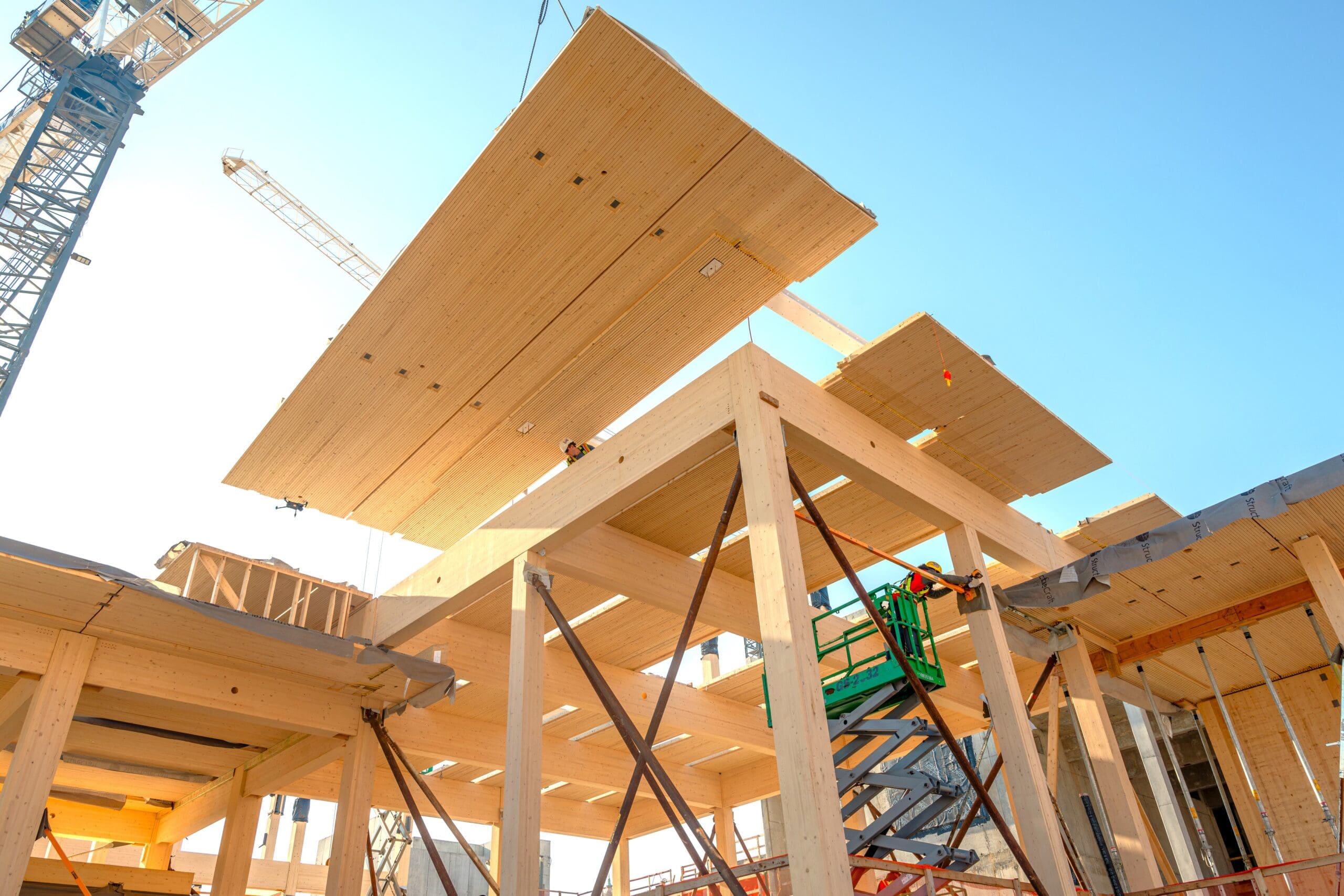
Installation Assistance
We offer installation start-up assistance for installers new to working with DLT or mass timber. Our experienced Project Managers and Site Supervisors can help your team develop erection and water management plans to ensure a smooth and successful installation.
Technical Considerations
DLT systems are engineered with specific solutions to meet project demands. Diaphragm design can utilize concrete toppings or shop-installed sheathing, depending on load requirements. MEPF systems are integrated using chases and precision-cut penetrations. Weather protection and building envelope transitions are addressed through shop-applied membranes and caulking details.
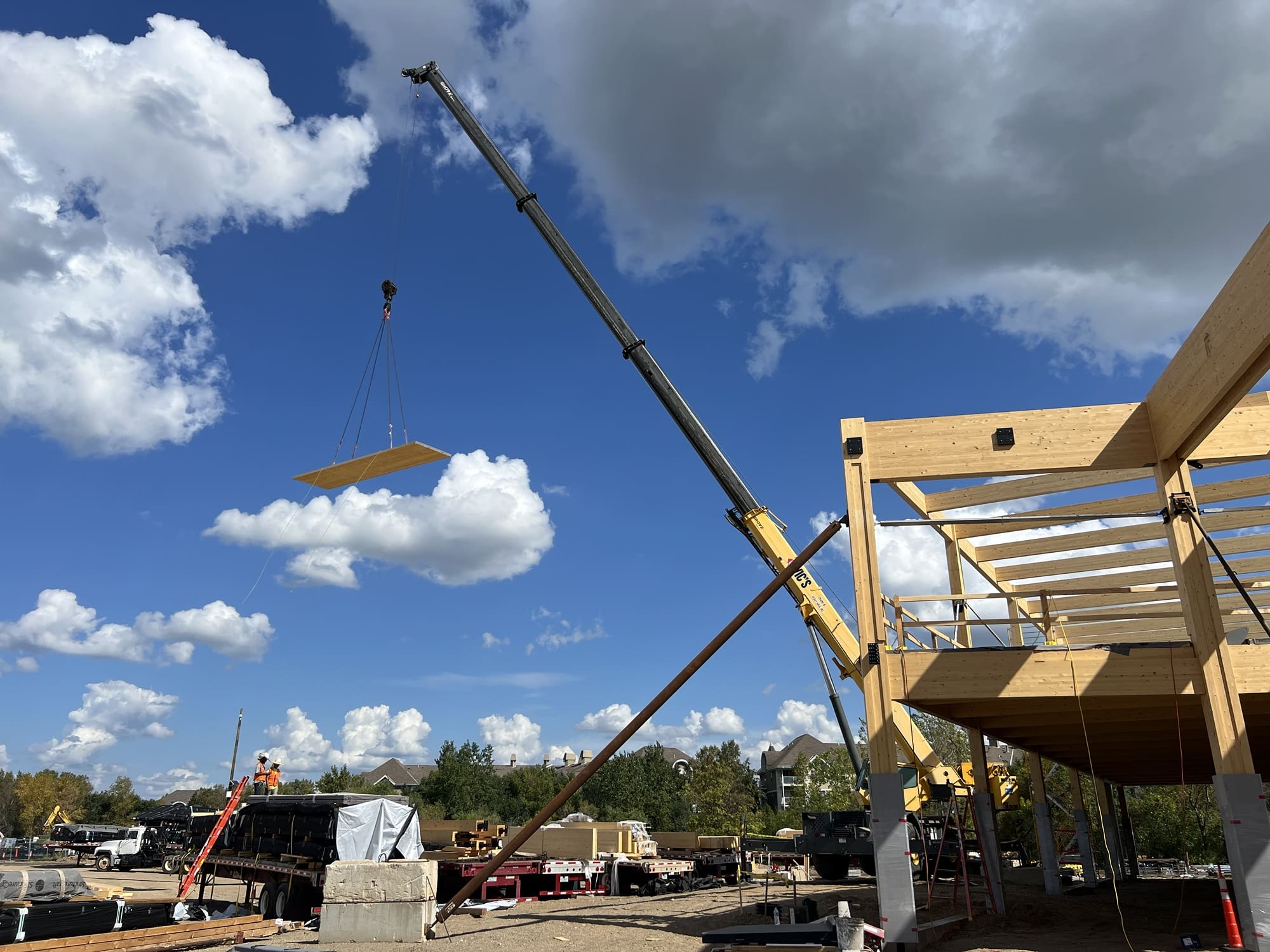
Technical Considerations Sheathing & Diaphragms
Diaphragms in DLT systems can be engineered using various methods, depending on project requirements and the magnitude of diaphragm loads. Common approaches include:
Concrete Topping
Most floor assemblies already include concrete toppings for vibration, fire and acoustic purposes. Designing this concrete layer to resist diaphragm forces is highly efficient as it leverages the inherent stiffness of the topping, which typically provides the most direct and rigid load path.
Shop-Installed Sheathing
Alternatively, sheathing materials such as plywood or oriented strand board (OSB) can be shop-installed and designed to take the diaphragm forces.
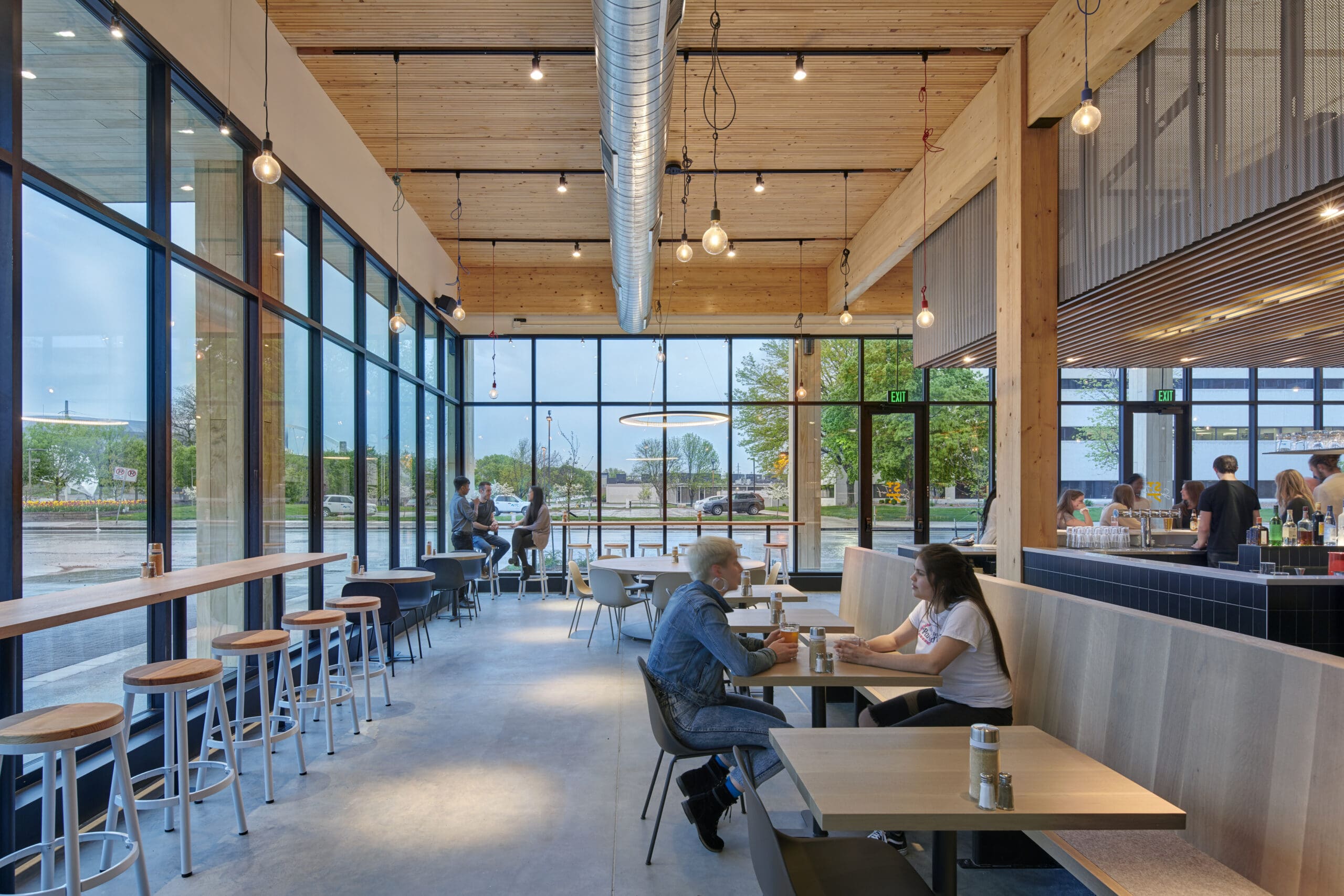
Technical Considerations MEPF Integration
Chases
Mechanical, electrical, plumbing, and fire (MEPF) systems can be seamlessly concealed within DLT assemblies by incorporating chases—strategically designed gaps between panels, typically ranging from 4” to 12”+ in width. This approach minimizes visual clutter and allows the natural beauty of the timber to remain focal.
To further conceal MEPF systems, DowelLam can supply non-structural chase covers to mimic the appearance of the DLT panels.
Penetrations
DLT panels are fabricated with precision-cut penetrations fabricated in our shop. By engaging in a collaborative BIM coordination process, MEPF penetration requirements can be identified early and seamlessly integrated into our CNC machining process.
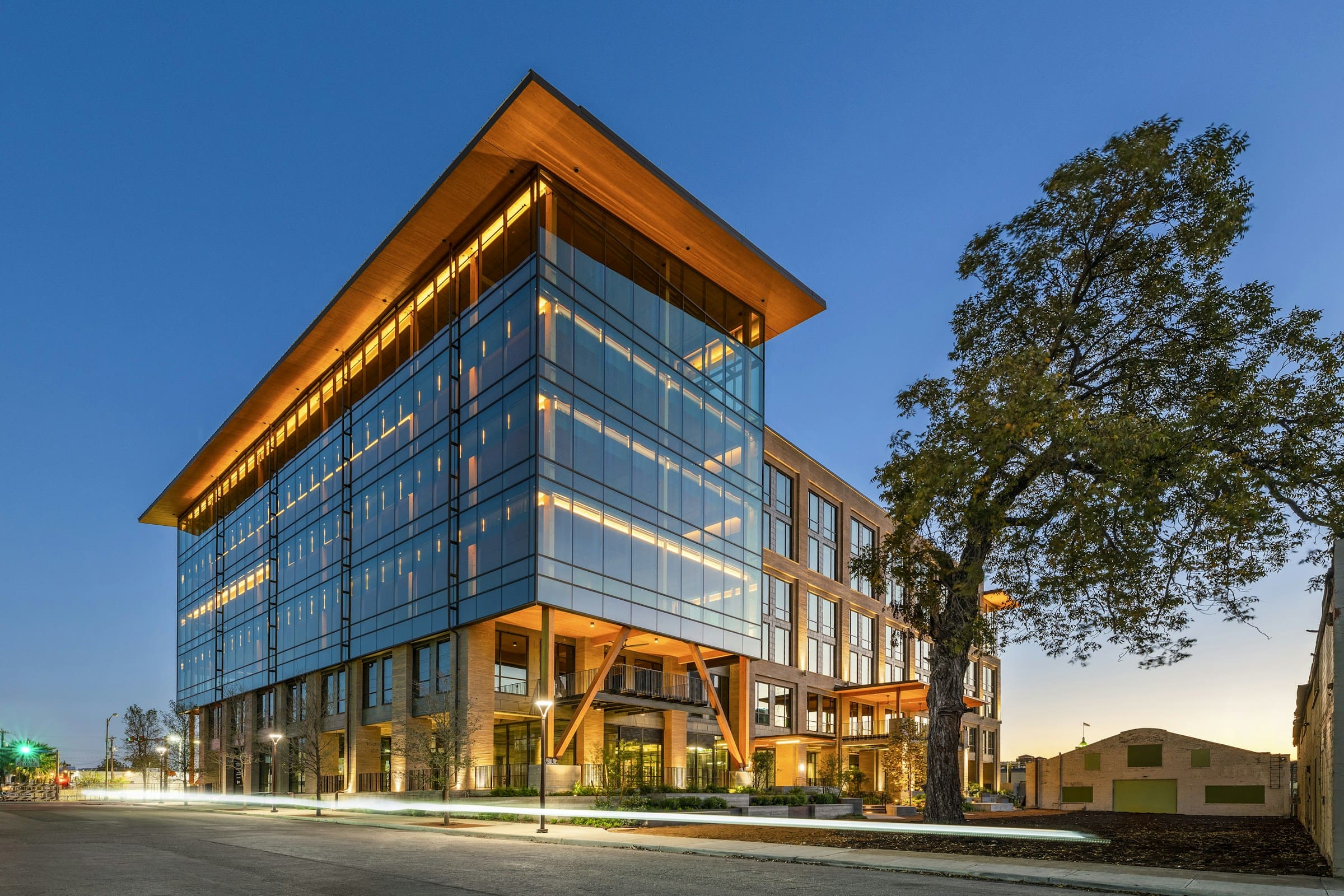
Technical Considerations Weak-Axis Cantilevers
Weak-axis (or transverse) cantilevers are possible to achieve in DLT with some special detailing considerations. Cantilevers of 12” to 18” are typically achievable with internal screw reinforcing. For longer transverse cantilevers, strong-backs or framing elements can be installed overtop of the panels for additional support.
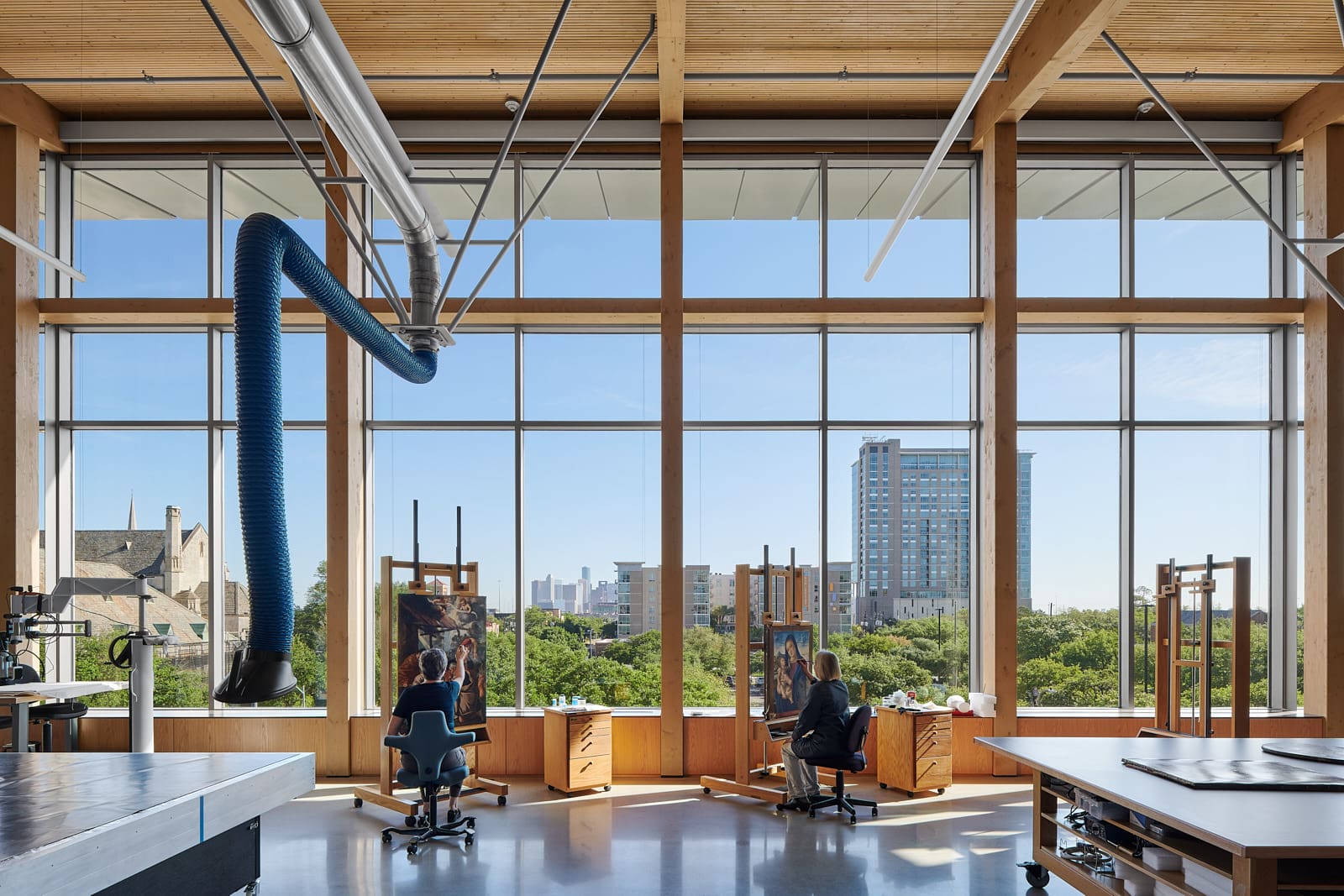
Technical Considerations Building Envelope Transitions
Where DLT panels transition from interior to exterior, caulking is shop-installed between each lamination to maintain air-barrier continuity at the building envelope. The caulking is inserted into small dados cut between each lamination.
Refer to the DLT Design Guide for more information and typical details.
DLT Design Guide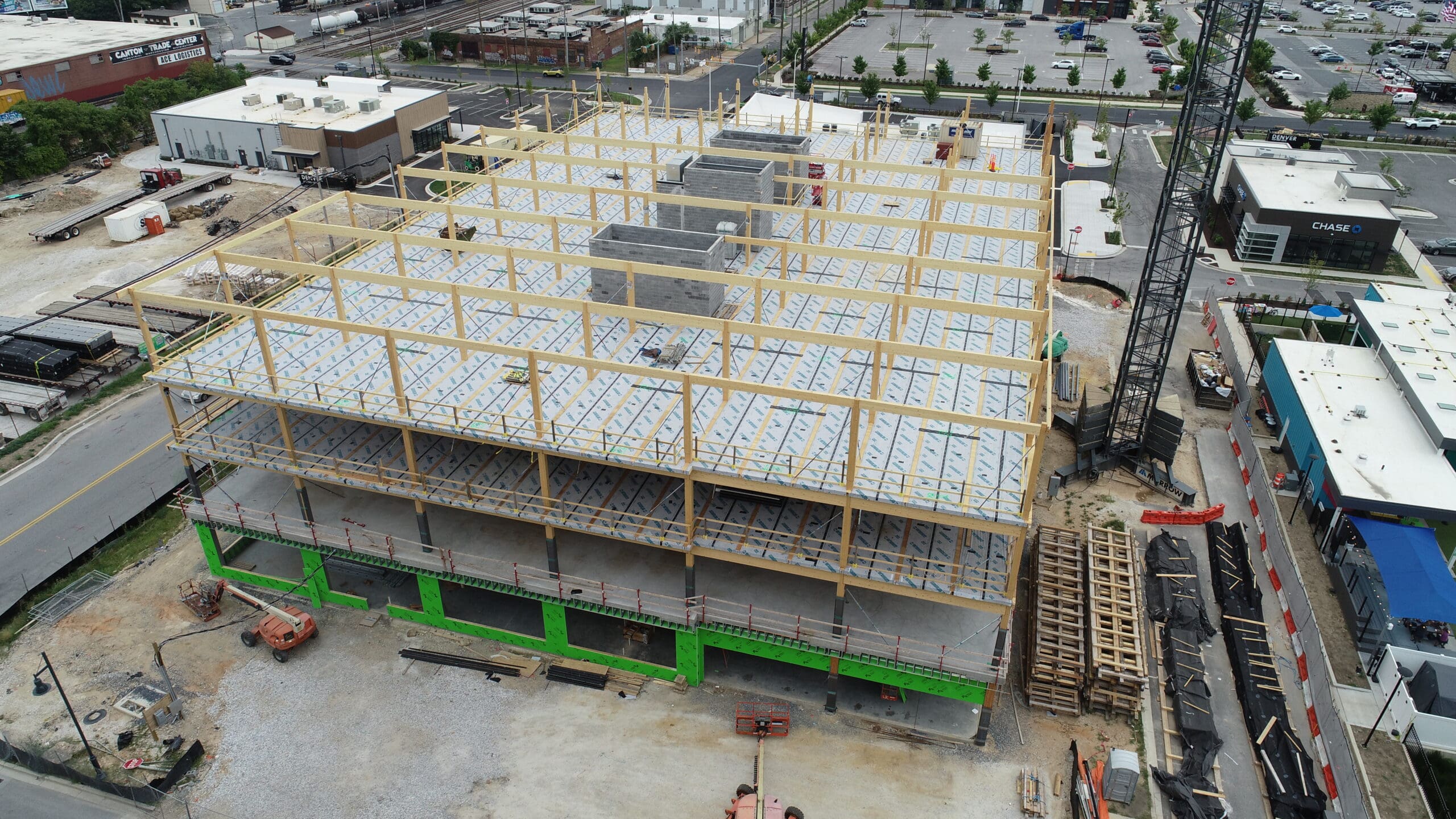
Technical Considerations Weather Protection
Weather protection is an important consideration for any mass timber structure. As a standard, all DowelLam panels include a shop-applied weather protection membrane to help prevent water ingress during construction. This membrane can be adhered or mechanically fastened to the top surface of panels.